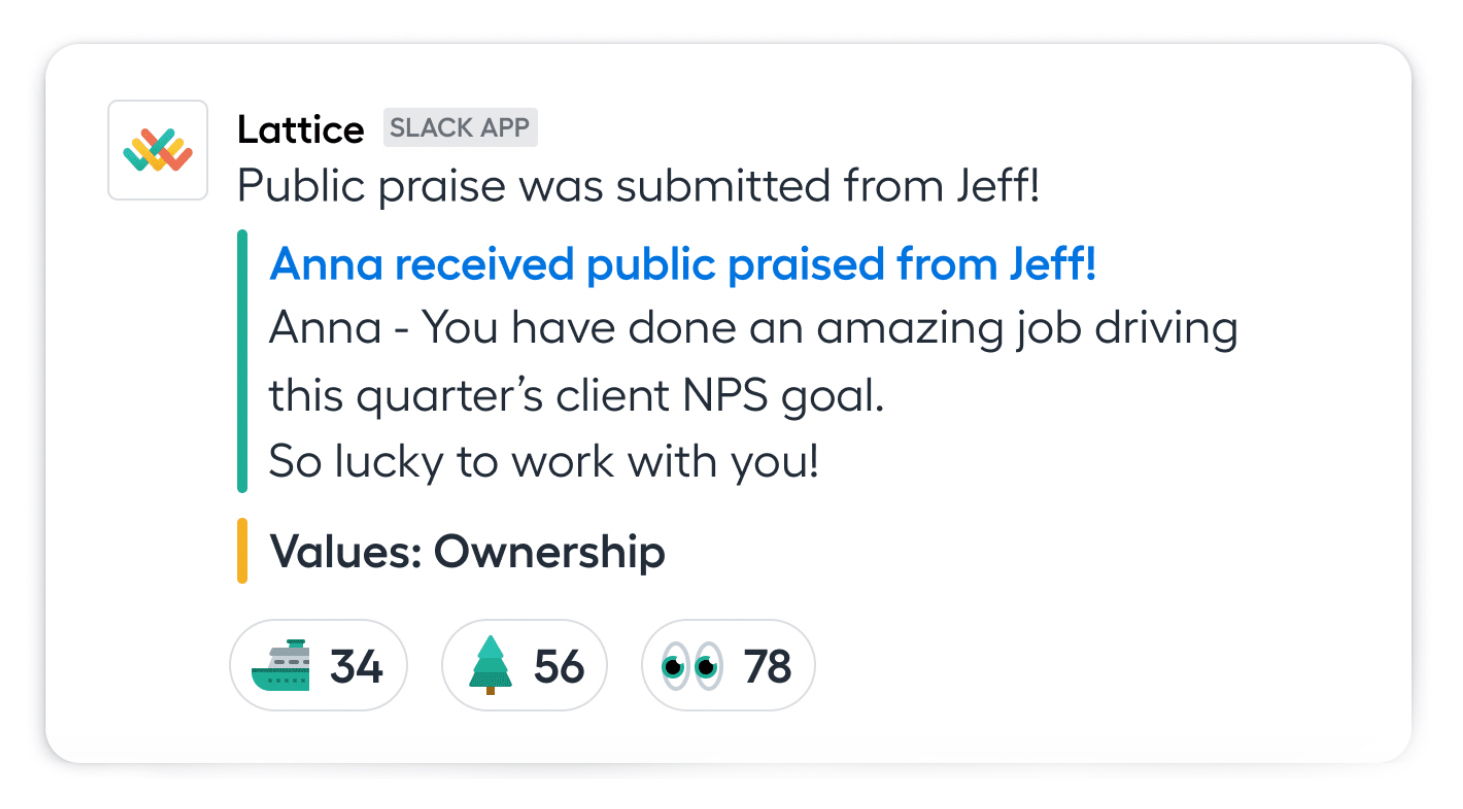While 2020 brought immeasurable challenges to businesses, the pandemic was not without its bright spots in the workplace. For one, people seemed to start appreciating each other a lot more.
“Part of this appreciation factor stemmed from a new understanding of how integrated our home and work lives really are, and we had never seen that before,” said Erica Keswin, workplace strategist and author of Rituals Roadmap: The Human Way to Transform Everyday Routines into Workplace Magic. Keswin noted that at the beginning of the pandemic, entire meetings could be focused on checking-in with colleagues. But eventually businesses had to adapt the ways in which they appreciated and recognized employees in order to keep operations afloat.
Many have turned to creative uses of technology to ensure employees feel seen, heard, recognized, and appreciated as most continue to work remotely. As it turns out, appreciating employees is about more than just providing support — it’s also really good for business.
According to an article in Harvard Business Review, data from JetBlue’s employee recognition program showed that for every 10% increase in employee recognition, the company experienced a 3% drop in turnover and a 2% bump in engagement. Similarly, a 2018 Society for Human Resource Management (SHRM) study found that two-thirds of HR professionals believe recognizing employees combats turnover, and 89% of respondents believe workplace appreciation and recognition improves the employee experience.
Even so, Gallup research shows that only one in three workers have received recognition or praise in the past week. What’s more, team members who haven’t received adequate recognition are two times more likely to say they’ll leave the company in the next year.
Technology makes it easy to appreciate employees and encourage peer-to-peer praise. Here are some creative ways businesses can implement this right away.
1. Enable employees to give each other rewards.
Allison Goldberg, cofounder and co-Creative Director of Gold Jam Creative, a firm that provides communications training with an emphasis on comedy and creativity to companies like Spotify, BuzzFeed, and Deloitte, has seen clients embrace a range of technology to appreciate employees. One in particular that stands out to her is Bonusly, an employee appreciation platform that helps employees give small bonuses to colleagues.
With Bonusly, companies purchase one of several monthly plans which gives employees access to a small monthly allowance of points to send as bonuses to their coworkers. Individuals must send all of their points by the end of the month or they expire. “You can exchange the points at the end of the month for gift cards at a slew of retailers,” Goldberg said. “Our clients seem to love it, because, what’s better than sending your coworkers money?”
Kaspter Langmann, CEO of Spreadsheeto, a company that offers online Excel training courses, said his company started using Bonusly as a way to encourage and appreciate employees in their hierarchy-less organization.
“Our organization is almost completely flat, so we rely on one another to do our jobs effectively,” Langmann said. At Spreadsheeto, the sales team really counts on the outreach team for prospect lists, and Langmann wanted a way for employees to be able to directly reward one another for making life a little easier. “People have loved it, and I think it’s been responsible for strengthening working relationships and camaraderie,” he added.
2. Take advantage of your existing tech stack.
Like many organizations, Brosix, a company that provides secure corporate instant messaging services through a private network, uses a dedicated Slack channel to shout-out employees. Rather than simply using it to share everyday business wins, employees nominate a colleague each week to receive a dedicated note in the channel. But the differences don’t stop there.
“The focus isn’t on people’s professional achievements, but on their team spirit and the specific activities that contribute to team success and cohesion,” said Brosix’s CEO Stefan Chekanov.
For example, one Brosix employee took the initiative to create a virtual escape room as a team-building activity, which was based on a set of riddles that the team solved remotely. “We worked in teams and it was a lovely opportunity to relax and solve an intriguing puzzle,” Chekanov said. The result: Almost every team member nominated the colleague responsible for the riddle that week.
Chekanov believes that the focus on spirit and teamwork is an important differentiator of the company’s appreciation practices — and that these factors are especially important to acknowledge when your team is working from home. “The sense of community is crucial for remote teams, and it leads them to seek support in one another rather than waiting for management to solve every problem,” Chekanov said.
3. Enlist celebs for a shout-out.
Other companies are enlisting celebrities for shout-outs through apps like Cameo to appreciate and recognize their employees. With Cameo, businesses can hire public personas or celebrities to record a personalized video message for employees.
John Ross, CEO of online education company Test Prep Insight, has used Cameo multiple times over the last six months, hiring actors from the show Seinfeld to wish employees a happy birthday. “Our office has a Seinfeld obsession, so I thought it’d be a hilarious way to boost spirits during an otherwise crummy time,” Ross said.
According to Ross, the videos were widely circulated throughout the company and brought much-needed levity. “Hostely, it’s had more than the intended effect. People absolutely love it,” he said.
Knowmium, a business and communications training consultancy, has used Cameo, too. For the birthday of senior consultant Robert Kienzle, a colleague hired Comedy Central’s Roastmaster General, Jeff Ross, to record a video. “The cameo wasn’t used as a traditional recognition for a completed project or promotion; instead, it was a great gift that showed my company’s thoughtfulness and originality,” Kienzle said.
Kienzle himself organizes a nonprofit called Roastmasters that’s associated with the popular public speaking club Toastmasters, so Roastmaster Ross was the perfect selection for his personalized video. “Knowing my company was creative enough to hire a cameo and find a celebrity that corresponds to my interests shows my company’s dedication to employee relations,” said Kienzle.
4. Incorporate rituals into the workplace.
Getting creative with peer-to-peer bonuses or celebrity shout-outs isn’t the only option for appreciating and celebrating employees. Additionally, Keswin recommended using rituals as a way to appreciate staff.
“Far more than habits and routines, rituals are personal, purposeful, and powerful — they bring people together in real, authentic ways that deeply matter. And in the workplace, rituals can be the glue that holds your workplace together,” wrote Keswin in her book Rituals Roadmap.
Appreciating employees through rituals can simply mean adapting routine in-office practices to our current remote reality. Bill Koenigsberg, CEO and founder of Horizon Media, a media services agency, built his business around appreciating his employees, which is much of the inspiration behind his tagline “Business is personal.” To embody that, Koenigsberg brings a personal touch where he can to his organization, including sending handwritten anniversary cards to Horizon Media’s nearly 3,000 employees to celebrate their workplace milestones and thank them for their service.
As a guest on Keswin’s podcast, Left to Our Own Devices, Koenigsberg talked about the importance of this ritual, and how when the pandemic hit, he pivoted to a daily Zoom call with the individuals celebrating their work anniversaries. “I wish them a happy anniversary, talk to them in their homes, in a very personal way,” Koenigsberg told Keswin on the podcast.
“These kinds of human connections don’t have to cost a dime,” Keswin pointed out. “But with intention, [they] can really make an impact.”

5. Make it easy for employees to share praise.
Personalized messages from upper management are a meaningful way to show employees you care, but so is everyday praise from those with whom they work most closely — their peers. Peer-to-peer praise boosts company culture, as the act of giving and receiving it reiterates that it’s not only those at the top who are qualified to recognize a job well done.
Lattice’s Praise feature offers a Slack integration that allows employees to celebrate folks directly in their company’s #praise channel. The praise is synced directly to Lattice, and those submitting praise are prompted to tie their kudos to a specific core value — an especially important component, since SHRM has found that employee recognition programs are rated higher when they are aligned with organizational values. Praise is most effective when it’s public, and Lattice’s Praise feature makes it easy to see all the team wins and shout-outs by popping into the #praise Slack channel. Team members can share in-the-moment wins, and companies can drive individual and organizational growth by celebrating employees.
—
Using technology to appreciate employees doesn’t have to be overly costly or complicated. Technology offers the opportunity to get as creative as you’d like with employee appreciation, and you can also adapt traditional office rituals for today’s virtual and hybrid reality as a simple but effective way to show employees you care. Praise takes relatively little effort, and receiving kudos — be it from peers or management — can have a big impact on employee morale, especially during challenging times.






